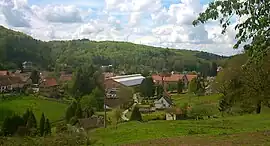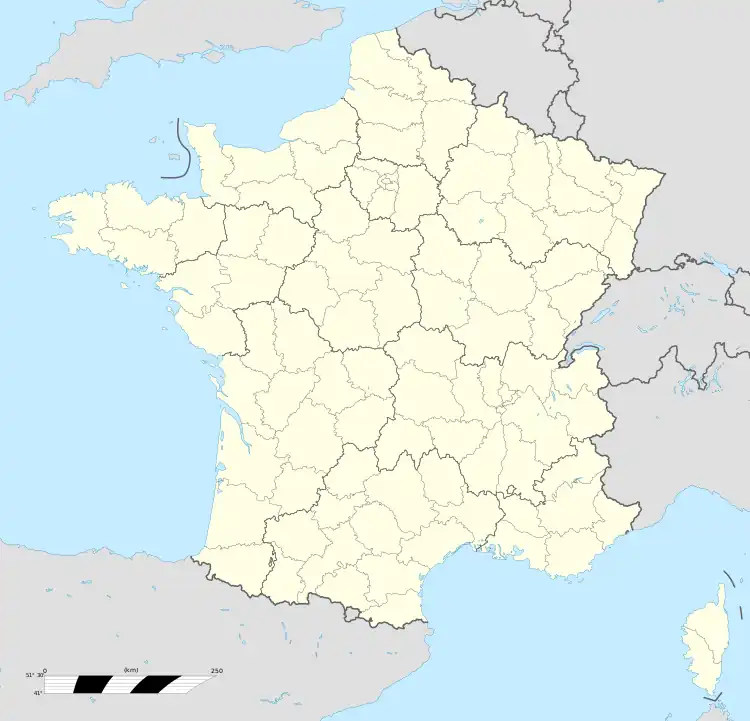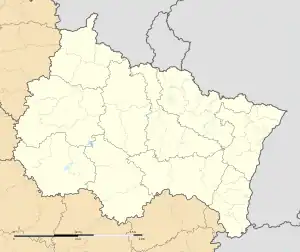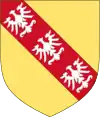Meisenthal
Meisenthal (French pronunciation: [maizəntal]; Lorraine Franconian: Meisedal) is a commune in the Moselle department of the Grand Est administrative region in north-eastern France.
Meisenthal | |
|---|---|
 A general view of Meisenthal | |
 Coat of arms | |
Location of Meisenthal | |
 Meisenthal  Meisenthal | |
| Coordinates: 48°57′59″N 7°21′11″E | |
| Country | France |
| Region | Grand Est |
| Department | Moselle |
| Arrondissement | Sarreguemines |
| Canton | Bitche |
| Intercommunality | CC du Pays de Bitche |
| Area 1 | 6.36 km2 (2.46 sq mi) |
| Population | 662 |
| • Density | 100/km2 (270/sq mi) |
| Time zone | UTC+01:00 (CET) |
| • Summer (DST) | UTC+02:00 (CEST) |
| INSEE/Postal code | 57456 /57960 |
| Elevation | 255–431 m (837–1,414 ft) (avg. 350 m or 1,150 ft) |
| 1 French Land Register data, which excludes lakes, ponds, glaciers > 1 km2 (0.386 sq mi or 247 acres) and river estuaries. | |
The village belongs to the Pays de Bitche and to the Northern Vosges Regional Nature Park. As of the 2013 France census, the village's population is 697. The inhabitants of the commune are known as Val-Mésangeois and Val-Mésangeoises.

The village is famous for the Centre International d'Art Verrier (CIAV; international center for studio glass). Glass has been produced in Meisenthal since the early 18th century, and since the 19th century Christmas decorations from Meisenthal were famous. It has been suggested that in the mid 19th century a shortage of apples inspired the local glass blowers to produce baubles to be used as decorations for Christmas trees instead.[2]
References
- "Populations légales 2020". The National Institute of Statistics and Economic Studies. 29 December 2022.
- Larsen, Timothy (2020). The Oxford Handbook of Christmas. Oxford University Press. p. 437. ISBN 978-0198831464.
